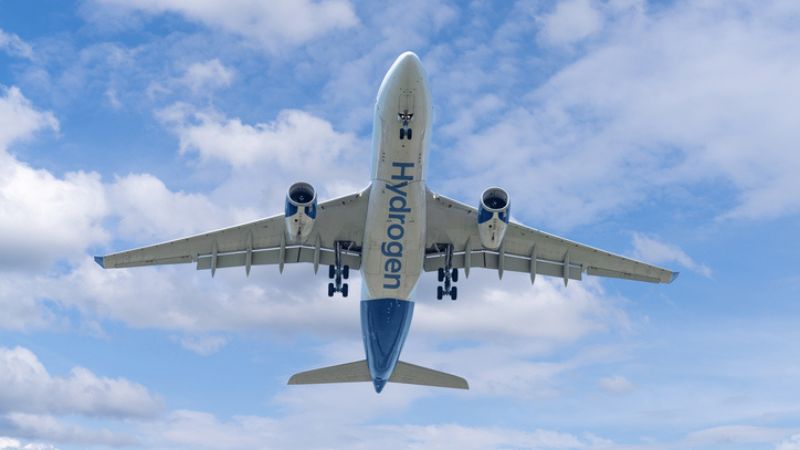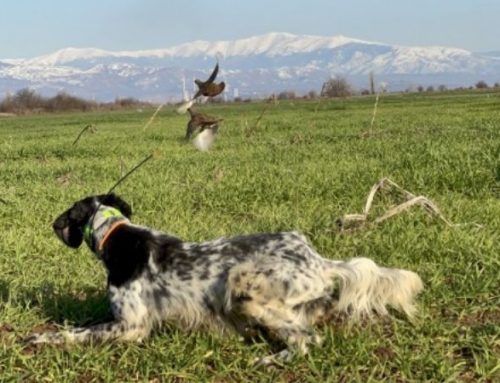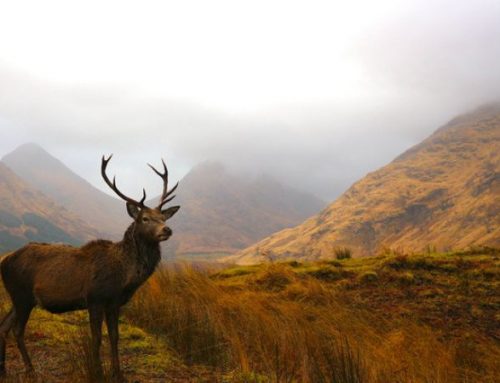Organizing an overseas hunting trip by plane is one of the most fascinating and emotionally charged experiences a hunter can have.
It means opening the door to unknown territories, encountering new species, testing yourself in environments far different from the familiar, and living intense days in places that are often remote, wild, and incredibly evocative. Whether you’re dreaming of red deer in the Scottish Highlands, Turs in the Caucasus, or chasing antelope in the African bush, just thinking about the departure is enough to stir the heart and ignite anticipation.
But excitement must always walk hand in hand with preparation. A hunting trip by plane is never something you improvise—it’s a full-scale logistical operation where nothing can be left to chance. Customs regulations, restrictions, firearm and ammunition transport rules, special check-in procedures—all of it demands careful planning. And this is what transforms a simple journey into a true adventure: the attention you pay to every detail, every document, every case, every step.
Properly packing your firearms, optics, and equipment isn’t just about efficiency and order—although, of course, arriving with everything in perfect condition is essential. It’s primarily a matter of safety and legality. Firearms transport laws vary by country and airline. A single mistake—however small—could result in delays, firearm confiscation, fines, or even being barred from the hunt.
That’s why every journey begins well before the departure date. It starts when you choose the right case for your rifle, select which optics to bring, check weight limits, contact the agency for temporary permits, carefully fill out the required forms, and ensure your insurance covers you abroad. It’s a form of respect—for the destination, your equipment, and above all, for yourself as a responsible hunter.
Every destination has its own rules, and every environment its own challenges. Flying with your firearm to Scotland for a red deer hunt requires different considerations than a trip to the Caucasus for an Eastern Tur, or an African safari in Limpopo. Knowing these differences, respecting them, and approaching them with a clear mindset is part of the mental and cultural preparation every great hunter embraces.
A hunting trip by plane isn’t just a transfer from point A to point B—it’s the real beginning of your adventure, the first step into the unknown, and the most important one to ensure a safe, seamless, and unforgettable experience.
In this post, we’ll guide you step by step on how to prepare your gear for an international flight—helping you avoid common mistakes and depart with the peace of mind that comes from being fully prepared.
1. Firearm Transport: Rules and Proper Containers
✅ Approved Hard Case
Your firearm must be transported in a rigid, lockable, anti-theft case (preferably with two locks). Rifles or shotguns should never be packed loosely in regular duffel bags. Airlines and customs authorities require secure containers that prevent easy access.
Montefeltro tip: Choose a hard case made of ABS plastic or aluminum, with high-density foam padding customized to fit your firearm.
✅ Unloaded Firearm, Separate from Ammunition
Your firearm must be unloaded, with the bolt removed if possible, and free of ammunition. Ammunition must be packed separately, according to strict guidelines (see section 3).
✅ Required Documents
-
Valid firearms license
-
European Firearms Pass (for travel within the EU)
-
Temporary import permits for the destination country
-
Invitation letter or contract with the hunting organizer
2. Optics: Delicate and Valuable
Optical sights and spotting scopes need special care. We recommend not transporting them mounted on the firearm during the flight. The strong vibrations in checked luggage and potential impacts can knock them out of alignment or damage them.
How to pack them:
-
Wrap in soft cloths, then place in a rigid, padded case
-
Alternatively, carry them in your hand luggage—if size and airline policy allow (always check in advance)
-
Use protective caps for turrets and lenses
3. Ammunition: How and Where to Pack It
Ammunition can be transported by air, but under strict limits (usually around 5 kg per passenger, depending on the airline).
General rules:
-
Must travel in a hard container, separate from the firearm
-
Never in hand luggage
-
Must be securely packed, ideally in original boxes or with internal dividers
Recommended:
Use metal cases with snap locks, placed in checked baggage or a separate locked case.
Helpful tip:
Always declare ammunition at check-in. This is mandatory and helps you avoid unpleasant surprises—or worse, baggage being denied.
4. Checked Luggage: What to Pack and How to Protect It
Most of your gear—technical clothing, boots, hunting backpack, binoculars, knives, etc.—will go in your checked luggage.
Practical advice:
-
Use water-resistant soft bags or hard cases, especially for flights with multiple connections
-
Place footwear in separate bags
-
Roll technical garments and use them to fill gaps, providing protection for fragile items
-
Do not place knives or sharp tools in hand luggage (they will be confiscated)
5. Hand Luggage: What’s Allowed
In your carry-on, you can bring:
-
Travel documents
-
Binoculars
-
Action cam or camera (without knives or loose batteries)
-
Trekking GPS
-
Optics (if allowed and size-compatible)
-
Prescription medications
6. Check-in and Security: What to Expect
Arrive at the airport well in advance (at least 3 hours before your flight). Checking in with firearms and ammunition takes time and requires inspection by airport police.
Essential steps:
-
Declare firearms and ammunition at check-in
-
Fill out transport forms
-
Hand over the firearm to airport police for inspection and official documentation
-
Retrieve at arrival after customs clearance
7. Insurance and Assistance
Before departure, make sure your hunting insurance covers international travel. Otherwise, purchase additional coverage (Montefeltro also offers assistance for this).
Also consider:
-
Taking photos of your firearm and luggage contents
-
Keeping receipts and purchase documents (for loss or damage claims)
-
Having emergency contact numbers for the organizer or local DMC
Travel Prepared = Travel Peacefully
Carefully packing your firearms, optics, and all your hunting gear is never just a detail. It reflects a broader mindset: one of respect, responsibility, and awareness. In a world where organization is key to turning complexity into harmony, this process becomes the foundation of the entire journey.
Every securely locked case, every accurately filled form, every carefully selected piece of gear isn’t just a practical action—it’s a way of caring for your experience, protecting yourself, and honoring what awaits you across the border. Traveling with a firearm is never trivial, which is why it requires precision, care, and—when needed—the humility to rely on those with real field experience.
Because being well-prepared means avoiding unnecessary obstacles, but above all, it means fully enjoying every moment of the trip, from the first check-in to the last sunrise in the field. It means arriving calm, focused, and ready for the true challenge: the hunt. A hunt that begins long before spotting the game and finds its first silent shot in careful planning.
And behind every successful trip lies careful organization. Behind every unforgettable one, there’s also shared passion and expertise. That’s why relying on professionals can make all the difference—a team that guides you step by step, knows the rules, anticipates issues, and moves with the same grace and dedication a hunter brings into the woods. Only in this way—through order and passion—can the journey truly become what it should be: a symphony of emotion, nature, and freedom.
Starting right means living better. And in the world of hunting, more than anywhere else, peace of mind is not a luxury—it’s a necessity. It’s a mental state that allows you to connect with the environment, face fatigue, appreciate the silence, respect the game, and treasure every moment in your memory.
With the right preparation, your adventure will leave no room for the unexpected—only space for what truly matters: the beauty of the journey, the greatness of nature, and the intensity of the memory you’ll carry with you forever.














